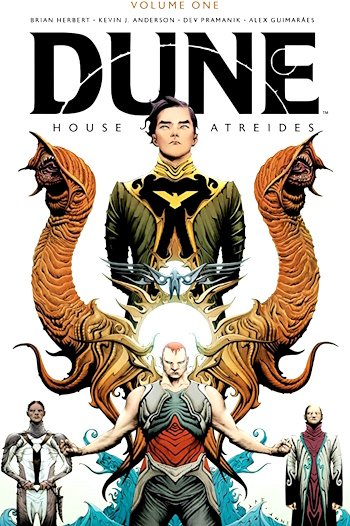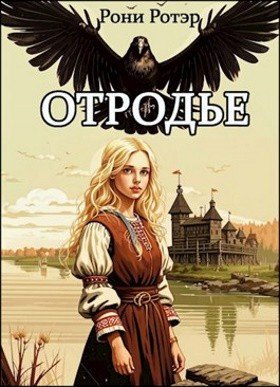08-C2205 8/17/02 3:39 PM Page 251
Isolde Resurrected
/
251
Interrupted Melody seems to fulfill the most imperious ambitions of Nazi film ideologues: their hopes to capture gullible minds and markets with that most German of all arts—music. Similar to Nazi cinema, Bernhardt’s use of the widescreen format privileges the human voice, restricts the possibility of disembodied sounds, and contains the body through ceaseless strategies of synchronization and diegeticization. But to describe Bernhardt’s visual style in analogy to Nazi features as anaesthetic, as eager to neutralize sense perception and coordinate all possible effects within the text itself, is completely unacceptable. Bernhardt’s use of CinemaScope might value lateral and often remarkably “unnatural” arrangements of actors within the frame, but it clearly does not replay the fundamental fears of corporeality so typical of Nazi staging principles and cinematography. Bernhardt’s widescreen Wagnerianism might offer theatrical shots and frontal visions, but unlike Nazi cinema it does not privilege well-defined sets and horizontal stasis over shifting perspectives and alternating focal lengths. With its lateral staging of action Bernhardt’s widescreen style in Interrupted Melody in fact revitalizes not Nazi film aesthetics but the staging principles of pre-1910 international film style, that is, early cinema’s use of the long shot and its spreading of visual centers across the entire frame. Furthermore, as I will propose in the third step of my argument, rather than mimicking the Wagnerian project of Nazi film practitioners, Bernhardt’s use of CinemaScope bears testimony to an increasing uncoupling of symbolic meanings, perceptual patterns, and ideological connotations from a film’s specific formal organization. Prefiguring the historical transformation of Fordist mass culture into a more diversified, post-Fordist culture of participatory events, Bernhardt’s CinemaScope spectacle decenters the methods by which modern industrial culture—Nazi or Hollywood style—
organized the viewer’s attention within the text itself.
au r at i c d i s t r a c t i o n / d i s t r a c t e d au r a As it projected expansive images that often overwhelmed a film’s work of narrative integration, CinemaScope expanded the horizontal angle of vision in such a way that viewers would lose a proper sense for the actual boundaries of the screen image. Widescreen pictures were meant to lure suburban audiences and TV viewers back into the theaters by erasing the viewer’s awareness of the frame. According to the industry advertisements of the mid-1950s, widescreen cinema extended an invitation to the viewer to enter the picture and explore the screen space like a virtual reality. CinemaScope pictures were thus intended simultaneously to center and decenter
08-C2205 8/17/02 3:39 PM Page 252
252
/
Berlin in Hollywood, 1939 –1955
the spectator. They wanted to create awe for the sheer scale of cinematic representation, but at the same time they generated viewers unable to concentrate their attention on only one aspect of the image, viewers whose distracted gaze wandered across and “into” the screen and thus displaced the possibility of detached contemplation.
Theatrical trailers such as the one for Interrupted Melody—“The world’s favorite music . . . in the greatness of CinemaScope”—presented this new relation between film and spectator as one that provided the viewer with visceral excitements and an intensified sense of self-presence. They focused the viewer’s attention not on the narrative content of a particular film but on the extraordinary capacity of the apparatus to project monumental sights and sounds in the first place. At once devoid of any stable point of identification and folded into the largely expanded picture, the spectator was no longer constructed as a voyeuristic consumer but as an active participant in search of recreational attractions: Passive viewing became associated, in industry marketing discourse at least, with traditional narrow-screen motion pictures; widescreen cinema became identified with the notion of “audience participation,” the experience of heightened physiological stimulation provided by wraparound widescreen image and multitrack stereotone. Although in both situations the spectator still remained immobile in a theater seat, the perceptible difference in audience-screen relationships between traditional cinema and the new widescreen formats was exaggerated in an attempt to foreground the spectator’s new relationship with the screen, which was now, if nothing else, no longer invisible.30
Similar to the logic of early film exhibition around 1900, CinemaScope features such as Interrupted Melody underscored the act of display and hoped to capitalize on the viewer’s conscious awareness of the act of watching a movie. Prioritizing exhibitionism over voyeurism, spectacle over narrative integration, widescreen films in the 1950s acknowledged their spectators and recognized their desire for instant sensual gratification. One should not, however, celebrate the widescreen format’s disruption of classical narrative codes as a quasi-Brechtian instance of resistance or spectatorial empowerment. American widescreen cinema around 1955 intended to bond postwar desires for physical mobility and visceral self-presence to new institutions of consumption themselves. Shrewdly reckoning with the new middle class’s thirst for more diversified products and cultural distinctions, widescreen technologies turned motion, activity, and expanded sensual perception into powerful ideologies and highly viable commodities.
08-C2205 8/17/02 3:39 PM Page 253
Isolde Resurrected
/
253
Widescreen cinema nevertheless marked a crucial break with the history of modern industrial culture and its attempt to produce unified subjects of cultural consumption. CinemaScope, on the one hand, served as a training ground for what one might call with Michel de Certeau a post-Fordist society of cultural poachers.31 The peripheral perspectives of widescreen presentations unfastened the viewer from the system of suture, that seductive dialectics of the seen and the unseen in classical cinema. Widescreen features encouraged the viewer to develop flexible tactics of cultural consumption through which they could ingest selective images and sounds and thus overcome their status as merely passive recipients. With its emphasis on display and visceral recreation, the widescreen format on the other hand foreshadowed the historical emergence of what sociologists such as Gerhard Schulze call our contemporary society of events and sensations (Erlebnisgesellschaft).32 Not what one saw but that one saw—and that one was seen seeing—became the principal object of delight in the widescreen theaters of the 1950s. In conjunction with TV, for which it was meant to present a powerful alternative, widescreen filmmaking in this way launched a proliferation of sights and sounds that have made it increasingly impossible to say what certain images and codes actually do to people.33 In an unwanted alliance indeed, television and widescreen cinema in fact inaugurated a process that before long was to displace all reliable codes of cinematic signification and—at least according to German director Volker Schlöndorff—undo what previous generations had ontologized as the common language of filmic expressions: “Whether we see a close-up or a long shot, whether the camera looks from below or above, whether it pulls toward or away from a face, no longer really matters. What we have is a total inflation of all effects. Even the use of the soundtrack has become void of any real expression, because it consumes all its means.”34
Bernhardt’s Interrupted Melody grants a preview of such coming postmodern attractions. Well before Leslie Fiedler defined the postmodern as a practice of art that would close “the gap between elite and mass culture,”35
Bernhardt’s widescreen spectacle made high art available for popular consumption. Similar to the “Three Tenor” events of our own era, Interrupted Melody de- and recontextualizes auratic art and pipes it through the commercial channels of postauratic culture. In thus blurring the modern boundaries between high and low, Interrupted Melody on the one hand foretells the extent to which aura today, as Jim Collins has argued, no longer designates a mode of textual address but rather is a matter of personal projection and appropriation that ironically cannot be realized without technological

08-C2205 8/17/02 3:39 PM Page 254
254
/
Berlin in Hollywood, 1939 –1955
Figure 30. Selling opera: Promotional material for Bernhardt’s Interrupted Melody. Courtesy of Filmmuseum Berlin—Deutsche Kinemathek.
mediation. Contrary to Benjamin’s expectation of 1936, Interrupted Melody suggests that “rather than being eliminated by ever more sophisticated forms of distribution and access, the production of ‘aura’ has only proliferated as it has been dispersed through the multiplication of information technologies and agents responsible for determining value.”36 Seen in a more general perspective, however, Bernhardt’s film also signifies a historical
08-C2205 8/17/02 3:39 PM Page 255
Isolde Resurrected
/
255
moment at which some of the parameters that have guided this study of Nazi cinema and German Hollywood exile loosen their critical grip. In the face of Bernhardt’s seamless incorporation of highbrow and mass culture neither Benjamin’s juxtaposition of auratic art and mechanical reproduction nor Adorno’s dialectics of mass culture and modernism offer critical points of reference anymore. History here starts to consume the very concepts that were once developed to theorize its course (fig. 30).
All this goes to show that Bernhardt’s leveling of autonomous art and mass culture has little to do with the way the Nazi film industry aspired to harmonize the conflicting vectors of modern culture. As we saw in part 1, Goebbels’s vision was that of a German culture industry whose streamlined products would simultaneously achieve artistic quality and satisfy popular demand. In spite of the inconsistencies of Nazi film politics, Goebbels emphasized the need to raise film above the language of mere commerce. Only state supervision and intervention, in the eyes of Goebbels, could ultimately warrant formal refinement and mass popularity; only the resolute nationalization of the film industry could guarantee that whatever people wanted to see was also what they were supposed to see.37 Bernhardt’s Interrupted Melody, by way of contrast, shows no real reservations about conflating the codes of art and business. Weighing future career options both before and after Lawrence’s physical collapse, neither the prima donna nor her husband deny that commerce and culture have become inseparably inter-twined. Contrary to Goebbels’s desire to have artists and politicians rather than producers and markets decide the course of art and film, Interrupted Melody leaves little doubt about the fact that nineteenth-century notions of aesthetic genius and autonomy have succumbed to the historical process.
The film sees Wagner and commodified diversion, aesthetic refinement and capital, as entirely compatible. No matter what one might think about this integration of culture and economics, the film’s farewell to the autonomous romantic genius at least undercuts any totalitarian definition of political leadership in analogy to the genius’s will to form and creativity.
b e t w e e n c h a i r s
Many German intellectuals have viewed America throughout the twentieth century as nothing other than a genre film and simulacrum. Bernhardt’s film returns this gaze at America. To the extent to which Interrupted Melody integrates autonomous art into postwar commodity consumption, it presents the appeal of European art and German music as a mere effect of the most advanced media technologies. Wagner’s music dramas, one might
08-C2205 8/17/02 3:39 PM Page 256
256
/
























